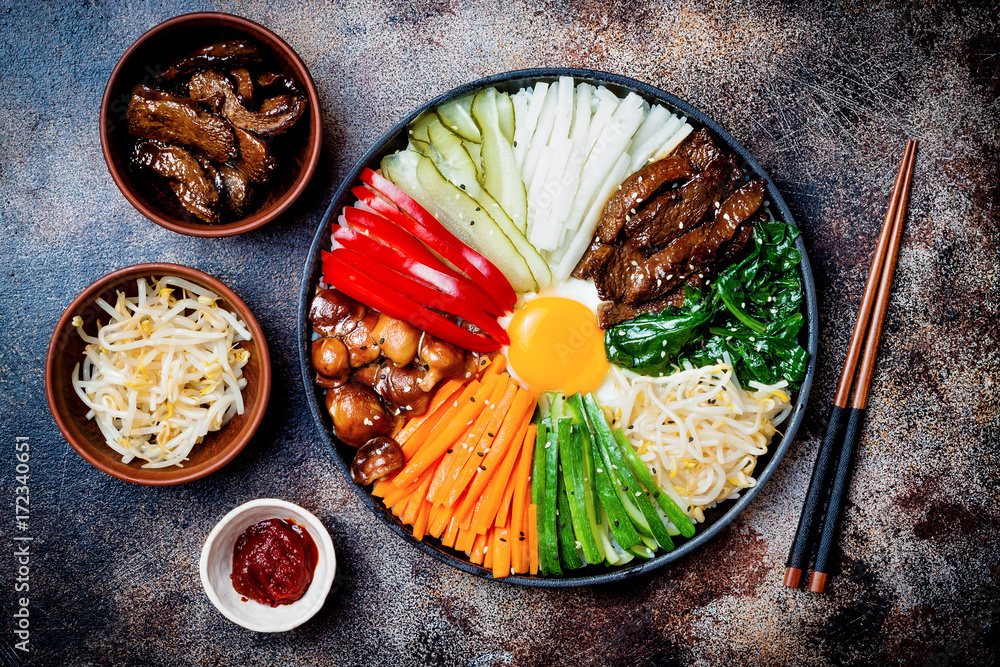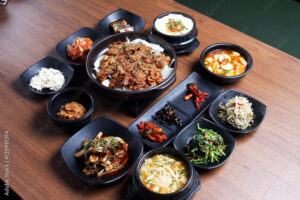
The reality that food is our common ground continues to be fascinating and inspirational. The Role of Food in Human Culture is certain especially for a country like Canada where diversity is huge. I am also captivated by the beauty of potlucks and how it brings people closer together because of food! Growing up in a culture where close family ties are customary, I came to appreciate the value of knowing people through eating with them. In my introductory blog post, I mentioned working with Korean students who came to the Philippines to prepare for their English proficiency exams like IELTS, TOEIC, and TOEFL. I was taken aback to realize that they too like to potluck to enjoy each other’s company. At that time, I was introduced to several South Korean dishes and in all honesty, I only enjoyed half a handful of all their dishes that I tried. I thought the flavors were peppery and tart. But I decided to give it another try, which I did, and I enjoyed it a little bit more than the first time. Every time I craved Korean food, I would just buy it prepared or go to a restaurant.
 Working as an EA in Regina, I get the chance to work with international students from Korea. It inspires me every time I see them enjoy a meal together. They shared some of their delectable dishes with me and for whatever reason, I must say that I enjoyed it much more this time. So, when I saw the learning project for EDTC 300, I pondered on giving South Korean dishes a shot! I have very minimal experience making Korean dishes where I’ve tried making Bibimbap for my family a handful of times and Tteok- bokki from frozen packaging. Making something from scratch would require more time. However, for the next 5 weeks of the Spring term, I would like to immerse myself in learning how to make Korean dishes, to savor the wonderful flavors of their culture, and to appreciate our diversity as people.
Working as an EA in Regina, I get the chance to work with international students from Korea. It inspires me every time I see them enjoy a meal together. They shared some of their delectable dishes with me and for whatever reason, I must say that I enjoyed it much more this time. So, when I saw the learning project for EDTC 300, I pondered on giving South Korean dishes a shot! I have very minimal experience making Korean dishes where I’ve tried making Bibimbap for my family a handful of times and Tteok- bokki from frozen packaging. Making something from scratch would require more time. However, for the next 5 weeks of the Spring term, I would like to immerse myself in learning how to make Korean dishes, to savor the wonderful flavors of their culture, and to appreciate our diversity as people.
 My plan for this learning project is to make one dish or beverage from South Korea once a week. I would dedicate at least three to four hours every Saturday shopping, preparing, recreating, and documenting the dish I have planned for that week. I decided to shop for the ingredients on a weekly basis to make sure that the ingredients I will be using are fresh. I will start with an appetizer for week one. A beverage and kimchi for week two, which I know sounds a bit odd, but the reason I planned to make kimchi on week two is for the dish to maximize the fermentation process which should be ready to go with the main dish for week four. On week three of my learning project I plan to make a famous Korean stew. Some of you might be interested in recreating it once we hit that time of year when it gets cooler. A popular South Korean main dish is what I will be venturing on for week four. Then week five will be dedicated to recreating a dessert from South Korea which is fitting for our hot summer months. What better way to wrap up this learning project than to have a sweet refreshing treat. My plan is to have my family try every dish I will be making and to provide me their feedback. Come join me as I excitedly venture into the delectable flavors of South Korea for the next five weeks!
My plan for this learning project is to make one dish or beverage from South Korea once a week. I would dedicate at least three to four hours every Saturday shopping, preparing, recreating, and documenting the dish I have planned for that week. I decided to shop for the ingredients on a weekly basis to make sure that the ingredients I will be using are fresh. I will start with an appetizer for week one. A beverage and kimchi for week two, which I know sounds a bit odd, but the reason I planned to make kimchi on week two is for the dish to maximize the fermentation process which should be ready to go with the main dish for week four. On week three of my learning project I plan to make a famous Korean stew. Some of you might be interested in recreating it once we hit that time of year when it gets cooler. A popular South Korean main dish is what I will be venturing on for week four. Then week five will be dedicated to recreating a dessert from South Korea which is fitting for our hot summer months. What better way to wrap up this learning project than to have a sweet refreshing treat. My plan is to have my family try every dish I will be making and to provide me their feedback. Come join me as I excitedly venture into the delectable flavors of South Korea for the next five weeks!
Rowena! I just wanted to reach out and thank you for being great in our group discussion yesterday. 🙂
Also– Cuisine, can I come over??? I am a great food taster LOL. I cannot wait to see where this journey takes you, love!
The layout of your post is incredible. The picture to word ratio is phenomenal. Can’t wait to continue along with your journey.
Hi Kyla!
Thank you so much for your kind words! 😊 I’m really glad you enjoyed our group discussion; it was great having you there. As for the cuisine, you’re welcome anytime! I’d love to have a great food taster like you over.
I’m thrilled that you liked the layout of my post. Your support means a lot to me!
-Rowena
Hi Rowena!! I am so excited for you to learn how to make South Korean dishes, desserts, and drinks. I’m sure it will also bring you closer to your Korean students and maybe you can all have a potluck together. I’ve tried to make a Bibimbap myself one time, but it didn’t turn out as good as I expected, but it was still a great experince! I followed this receipe: https://www.youtube.com/watch?v=_Bm-Y_skmeU&ab_channel=Marion%27sKitchen. And you are right – having fresh ingredients is the key!I can’t wait to hear about your progress and good luck on your cooking journey! 🙂
Mariia!
Thank you so much! I’m really excited to dive into South Korean cuisine. Learning these dishes will definitely be a wonderful way to connect with my Korean students, and a potluck sounds like a fantastic idea!
Bibimbap is such a delicious dish! Thanks for sharing the recipe link—I’ll definitely check it out. Even if it didn’t turn out as expected, I’m sure it was still a fun and tasty experience. Fresh ingredients really do make all the difference.😊
-Rowena
Rowena, this first post is fantastic, and I believe you will enjoy your learning project. I love cooking so I am going to be a frequent reader of your posts. I also can’t wait to read your blog on which store it’s best to get the ingredients to make Korean food.
Thank you so much for your kind words, Ola! I’m glad you enjoyed my first post, and I’m thrilled to have you following along on my learning journey. It’s wonderful to connect with a fellow food fan. I can’t wait to share more about my project, and I’ll definitely keep you updated on where to find the best ingredients for Korean cuisine. Stay tuned for more culinary adventures!